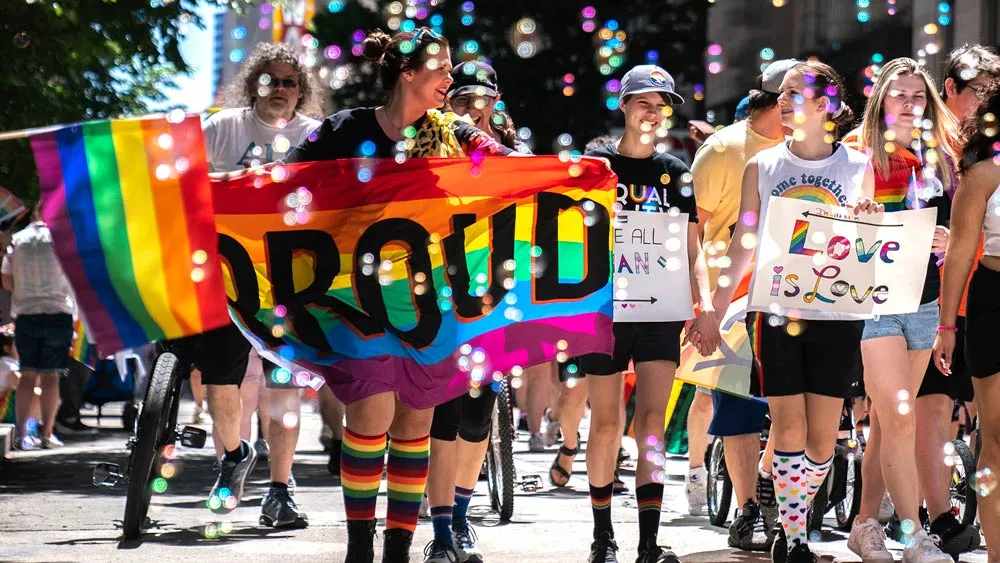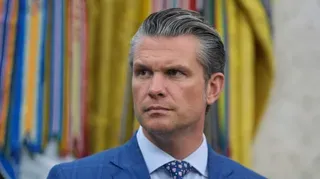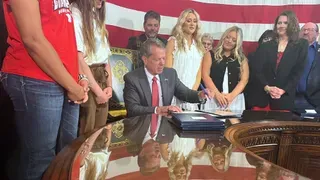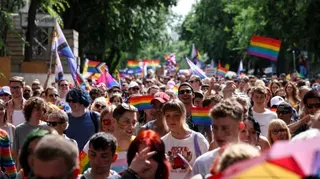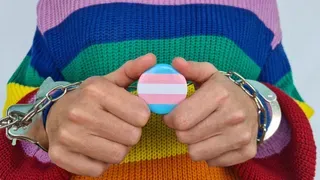October 28, 2009
How Ted Olson May Sway Supreme Court... or Not
Kilian Melloy READ TIME: 4 MIN.
A federal court case in San Francisco may offer a window into the arguments in favor of marriage equality that could eventually find their way before the U.S. Supreme Court.
An Oct. 26 New York Times article reported that the lawyer in the anti-marriage side of the case, which challenges Proposition 8 on the claim that the voter referendum that yanked marriage rights away from Californai's gay and lesbian families last year violated federal Constitutional protections, was unable to articulate why gays marrying is a threat to stable unions between heterosexuals.
Attorney Charles J. Cooper made the claim that there was a state interest in denying gay and lesbian families marriage parity in order to encourage straight couples to marry and have children.
But when the judge in the case, Vaughn R. Walker, asked exactly how the domestic affairs of a gay couple could disrupt the martial course of a straight couple's life, Cooper admitted that he was stumped.
"I don't know, your honor," Cooper said. "I don't know."
Judge Walker picked at Cooper's argument some more, noting that he had presided over the marriage ceremonies of heterosexual couples who were well beyond child bearing years.
Cooper had motioned that the lawsuit, brought by Theodore B. Olson and David Boies, be summarily tossed, but Walker declined to do so.
The suit, recalled the New York Times, was something of a surprise for many GLBT equality leaders, who questioned the wisdom of bringing a federal lawsuit on the issue, and wondered about Olson's participation, given that Olson had served under George W. Bush as a solicitor general.
But now those doubts are softening, the article said. New York University professor of law Kenji Yoshino told the Times that Judge Walker not granting Cooper's motion to toss the suit already stands as "a major victory" for the pro-marriage equality side of the case.
But others, including Judge Walker, are less sure that if the suit succeeds in San Francisco and then proceeds to the Supreme Court, it will gain traction among the current bench.
The article noted that even the more liberal wing of the court may not wish to hand down a finding that outstrips society in terms of progress; the court seems to regard Roe v. Wade as instructive in how judicial decisions can polarize society. Moreover, New York University law professor Barry Friedman observed that the Supreme Court seems to stay abreast to, and move along with, societal consensus: Friedman points out that in 1986, the court upheld laws criminlaizing consensual sexual cntact between adults of the same gender, but in 2003 the court struck down such laws. The difference was more than changes on the bench; American social views had also matured in the interim. Friedman told the New York Times that this was "a screamingly evident case of the court's running right along the tracks of public opinion."
Support for the right to full marriage parity has grown in the United States, noted the article, but not enough to guarantee a Supreme Court verdict that would be favorable to gay and lesbian families.
But Olson is not deterred; when Judge Walker questioned his argument, Olson cited the Supreme Court case Loving v. Virginia, which definitively struck down anti-miscegenation laws and cleared the way for mixed race couples in all 50 states to marry.
Even so, the article noted, America may have been more ready to accept mixed-race marriages in 1967, when Loving was decided, than it is now to embrace same-sex couples being allowed to wed.
The case is set to go to trial in January; it promises to be edifying, and not a little dramatic. Said Yoshiro, "We should buckle our seatbelts.... A comprehensive vetting of the empirical issues by a judicial tribunal is welcome and long overdue. Walker's trial bids fair to be a trial in an almost scientific sense of the word."
While Judge Walker has evinced a sincere interest in the merits of assertions that marriage equality would somehow disrupt heterosexual unions, the right wing have latched onto the semantics surrounding the case, blasting the New York Times for beginning to refer to heterosexual wedlock as "opposite-sex marriage" rather than using religiously charged terminology such as "natural" or "traditional" marriage. An Oct. 27 WorldNetDaily article reported that Bill Donohue, the president of the Catholic League, has slammed the paper for its use of the phrase at the organization's Web site, writing, "Is this the start of one more round of corrupting the English language?"
Donohue promptly recited right-wing talking points in regarding marriage equality. "Here's how it will play out in the classroom: kindergartners will be told that some adults choose same-sex marriage and some choose opposite-sex marriage.... There is no moral difference--it's just a matter of different strokes for different folks. Not mentioned, of course, will be that some male-on-male sex practices are dangerous. Nor will it be pointed out that only so-called opposite-sex marriages are capable of reproducing the human race.... In other words, the kids will be lied to about what nature ordains."
Continued Donohue, "Marriage means one thing, and attempts to make it a smorgasbord are pernicious."
Kilian Melloy serves as EDGE Media Network's Associate Arts Editor and Staff Contributor. His professional memberships include the National Lesbian & Gay Journalists Association, the Boston Online Film Critics Association, The Gay and Lesbian Entertainment Critics Association, and the Boston Theater Critics Association's Elliot Norton Awards Committee.
